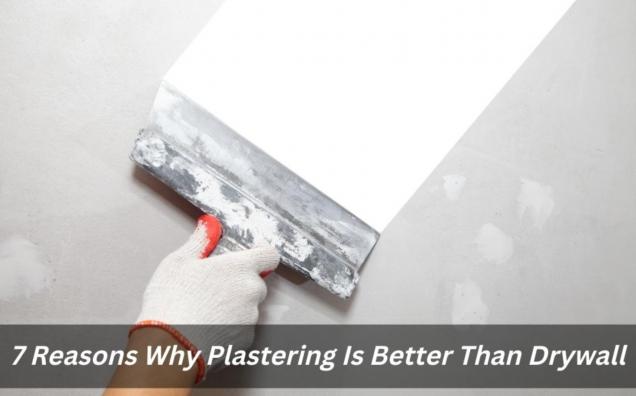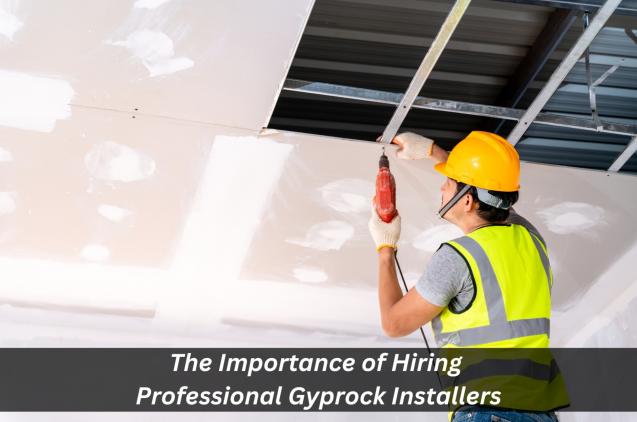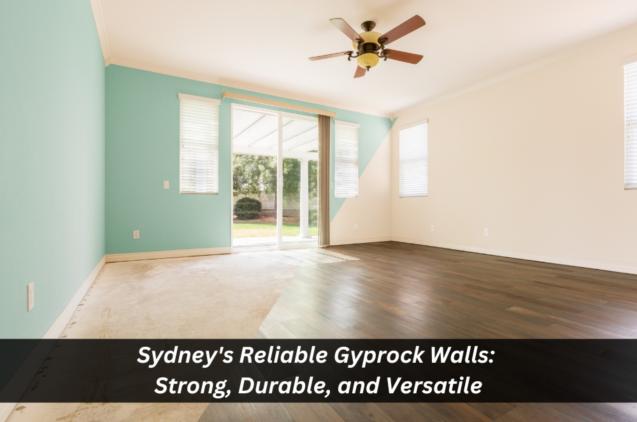
Plastering Tips On How To Choose The Right Plaster
By Mi Painting & Maintenance|December 14, 2022
Are you looking for some wall plastering tips? Have you had problems choosing between two types of plaster? Well, don’t worry because this article can help you. Read on to find out more about how to choose the right plaster.
When it comes to plastering walls, you don't want to go wrong. You want to get the plastering job done right. That means choosing the right type of plaster or mortar and applying it correctly. Plasters also known as joint compounds are special materials designed to fill cracks or holes in walls, floors, ceilings, etc. They are usually applied over drywall or other wall-covering material.
While plasters come in various colours, textures, and finishes, they all serve the same purpose – to hide imperfections in the walls and floors. If you want to choose the best plaster for your project, then make sure you consider these four things: the kind of surface it should cover, the type of moisture it should absorb, its appearance, and finishing options.
What is plastering?
Professional plastering is the application of dry plaster onto a surface in order to provide a smooth, hard, durable finish. This can be done for aesthetic purposes, but often serves to protect surfaces from damage. If you have never heard of plaster before, it's time to learn what exactly it is.
Different kinds of plasters are available depending on their applications. In most cases, you can mix the plaster with parts of water and sand to create a paste that can be easily spread and sticks to the wall or the surface being treated. First, you must prepare the area and put small amounts of plaster to test. Once it dries, the finished product looks like painted drywall.
Most plasters come in two forms: drywall compound and cementitious plaster. They both work well, but drywall compound has some advantages over cementitious plaster.
Types of plaster
There are different kinds of plasters that are made from either natural products or synthetic ones. Natural plasters include lime, cement, and gypsum. These plasters are typically very light, porous, and easy to apply. Synthetic plasters are often heavier and harder than traditional plaster. They do not contain any organic materials but instead consist of minerals including silica sand, calcium sulfate, quartzite, and dolomite stone.
Natural plasters tend to look more homely while synthetic plasters are much brighter and cleaner. However, they may require extra care to keep them clean. When choosing a plaster, make sure it is 100% free of dust particles, dirt, and debris. This is especially true if you are using limestone plasters which have been found to release harmful chemicals into the air when exposed to sunlight.
How to choose plaster?
Choosing the perfect plaster for your project is actually pretty simple. First off, determine whether you need plaster for interior or exterior use. Interior plasters are generally lighter weight, porous and work well on flat surfaces. Exterior plasters are heavier and work better on uneven surfaces.
Next, decide whether you need one that is easy to spread the plaster or has a thick consistency. Thicker plasters hold up better under heavy traffic and are easier to control due to their firm texture. Also, consider the amount of moisture that needs to be absorbed by the plaster.
If you live in an area where there is little humidity, then a thinner, lightweight plaster would probably suit your needs. Conversely, if your home is subject to large amounts of rain and snow, then you might want to opt for a thicker, heavier plaster that is less likely to crack.
Once you have decided on a kind of plaster, you should look at how long it takes to dry and cure. Generally speaking, plaster takes two hours to dry and another one hour to cure or harden. You can speed up this process by spreading multiple coats of plaster rather than just one.
A fast-drying plaster will help reduce the chances of cracking during application and curing. Finally, once you find the right one for your project, always check the label to ensure the plaster meets all health requirements.
When it comes to plastering walls, you don't want to go wrong. You want to get the plastering job done right. That means choosing the right type of plaster or mortar and applying it correctly. Plasters also known as joint compounds are special materials designed to fill cracks or holes in walls, floors, ceilings, etc. They are usually applied over drywall or other wall-covering material.
While plasters come in various colours, textures, and finishes, they all serve the same purpose – to hide imperfections in the walls and floors. If you want to choose the best plaster for your project, then make sure you consider these four things: the kind of surface it should cover, the type of moisture it should absorb, its appearance, and finishing options.
What is plastering?
Professional plastering is the application of dry plaster onto a surface in order to provide a smooth, hard, durable finish. This can be done for aesthetic purposes, but often serves to protect surfaces from damage. If you have never heard of plaster before, it's time to learn what exactly it is.
Different kinds of plasters are available depending on their applications. In most cases, you can mix the plaster with parts of water and sand to create a paste that can be easily spread and sticks to the wall or the surface being treated. First, you must prepare the area and put small amounts of plaster to test. Once it dries, the finished product looks like painted drywall.
Most plasters come in two forms: drywall compound and cementitious plaster. They both work well, but drywall compound has some advantages over cementitious plaster.
- Drywall compounds typically contain water, sand, and other ingredients that allow them to flow into cracks in the wall. This makes it easier to apply the plaster and smooth out imperfections in the wall. Plus, they tend to adhere better to stone, brick, and concrete surfaces.
- Cementitious plasters require less finishing because they already look finished. However, they're often harder to apply and require additional steps before they become completely dry. Furthermore, cement plasters tend to shrink as they set, so they must be applied with extreme caution.
Types of plaster
There are different kinds of plasters that are made from either natural products or synthetic ones. Natural plasters include lime, cement, and gypsum. These plasters are typically very light, porous, and easy to apply. Synthetic plasters are often heavier and harder than traditional plaster. They do not contain any organic materials but instead consist of minerals including silica sand, calcium sulfate, quartzite, and dolomite stone.
Natural plasters tend to look more homely while synthetic plasters are much brighter and cleaner. However, they may require extra care to keep them clean. When choosing a plaster, make sure it is 100% free of dust particles, dirt, and debris. This is especially true if you are using limestone plasters which have been found to release harmful chemicals into the air when exposed to sunlight.
How to choose plaster?
Choosing the perfect plaster for your project is actually pretty simple. First off, determine whether you need plaster for interior or exterior use. Interior plasters are generally lighter weight, porous and work well on flat surfaces. Exterior plasters are heavier and work better on uneven surfaces.
Next, decide whether you need one that is easy to spread the plaster or has a thick consistency. Thicker plasters hold up better under heavy traffic and are easier to control due to their firm texture. Also, consider the amount of moisture that needs to be absorbed by the plaster.
If you live in an area where there is little humidity, then a thinner, lightweight plaster would probably suit your needs. Conversely, if your home is subject to large amounts of rain and snow, then you might want to opt for a thicker, heavier plaster that is less likely to crack.
Once you have decided on a kind of plaster, you should look at how long it takes to dry and cure. Generally speaking, plaster takes two hours to dry and another one hour to cure or harden. You can speed up this process by spreading multiple coats of plaster rather than just one.
A fast-drying plaster will help reduce the chances of cracking during application and curing. Finally, once you find the right one for your project, always check the label to ensure the plaster meets all health requirements.



